In November, I took advantage of a break in the Southwest Oregon rain to explore the edges of the Kalmiopsis Wilderness in the Rogue River-Siskiyou National Forest. After the first good Fall soak I visited Rough and Ready Creek, a tributary that feeds the Wild & Scenic Illinois River. While only about 30 miles from my home as a guide on the Rogue River, Rough and Ready’s character is completely different and utterly unique. Unfortunately, it is not fully protected even though it showcases the very best qualities of the Kalmiopsis Wilderness.
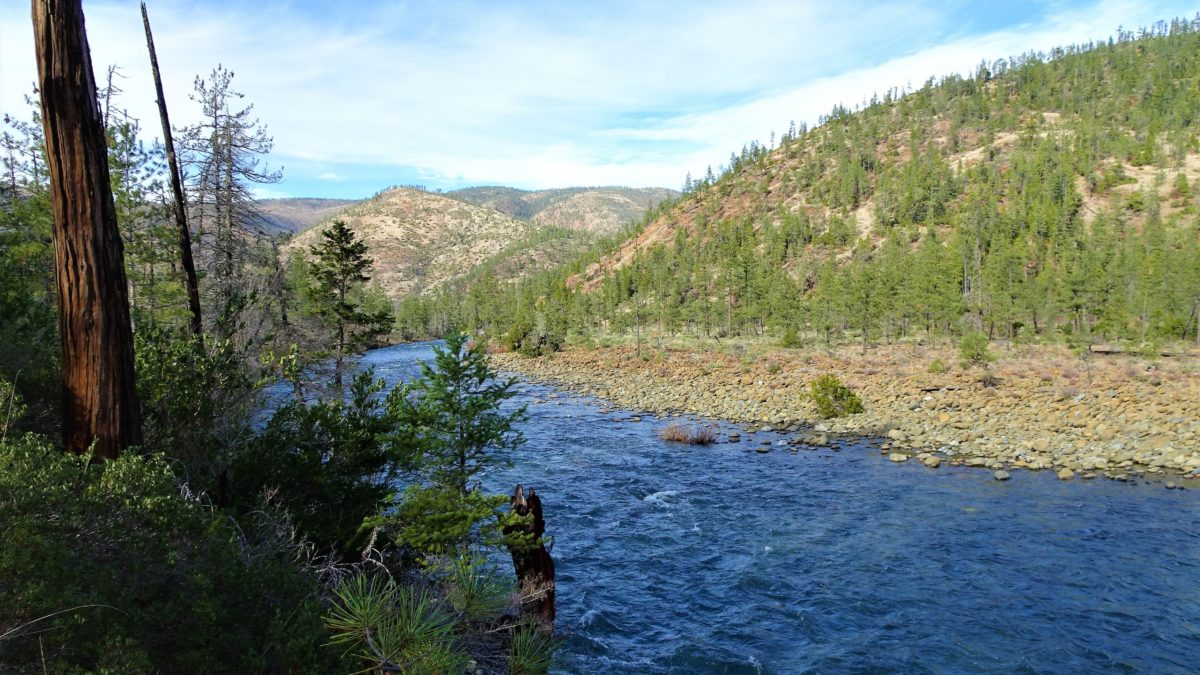
What is Rough and Ready Creek like?
When I explored Rough and Ready Creek, I found red rocks contrasted by dark green conifers, and cut by clean blue water. Its red rocks come from Earth’s metal-rich crust undergoing varying degrees of mineral transformations, thanks to past underground exposure to water (known as serpentinization). Serpentine rocks thus can represent the rainbow, but the Rough and Ready area contains extra iron which has rusted the rock startlingly red.
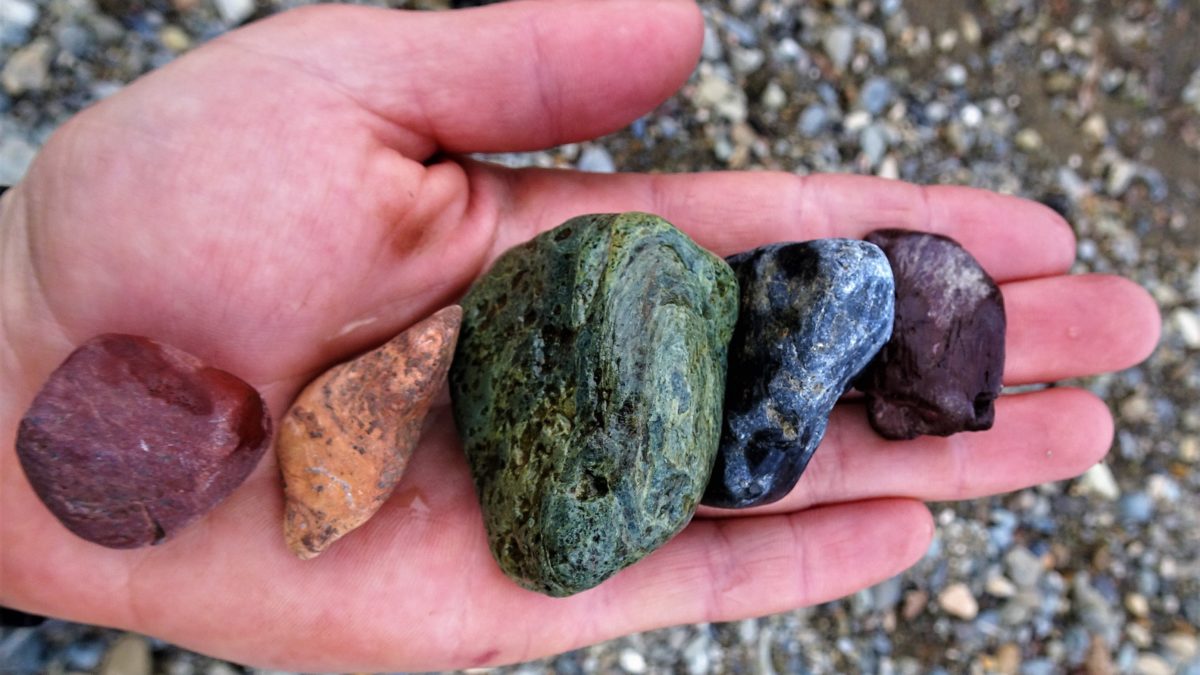
Unusual geology leads to unusual soils – which leads to amazing plant adaptations. To cope, trees like the Port Orford Cedar only grow to a fraction of their size, and other smaller shrubs and flowers have turned to eating insects or sequestering away heavy metals. Plants that grow here are found nowhere else. The West Fork Illinois River watershed holds the highest concentration of rare plants in Oregon. In addition, Rough and Ready Creek specifically is one of the few valleys uninfected by Port Orford cedar root disease. Even on a seemingly sleepy November day, I found the last flowering plants, mushrooms, lichens, and the rare carnivorous pitcher plant (Darlingtonia californica).
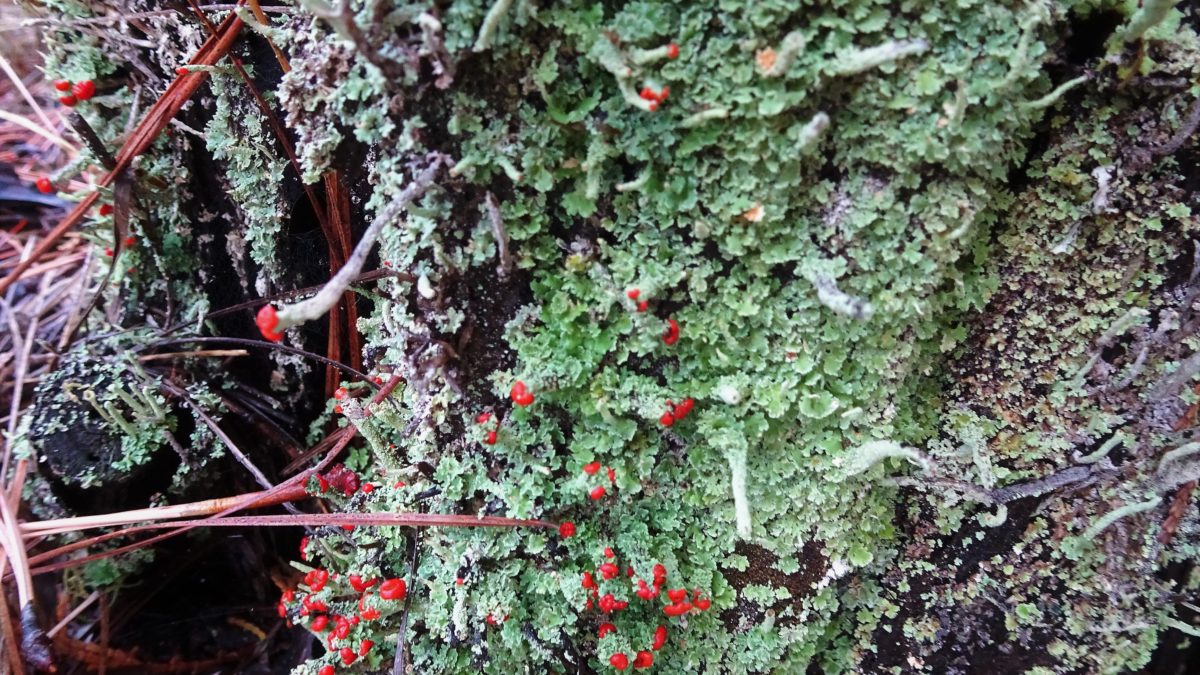
Following the creek, I felt lucky to see Rough and Ready flowing. Water usually disappears below the flood-born rocks under the 199 bridge, but I could see a lively stream even there. I was surprised to find out later that these headwaters can receive as much as 150 inches a year! Moreover, the first few rains usually flush sediments and create turbid rivers, but the Rough and Ready geology leaves this water remarkably clear. I now understand why it houses some of the last native Chinook salmon, Steelhead, and Cutthroat trout. Not to mention the rest of the ecosystem that support these fish and the few intrepid hikers and whitewater boaters looking to experience a unique place.
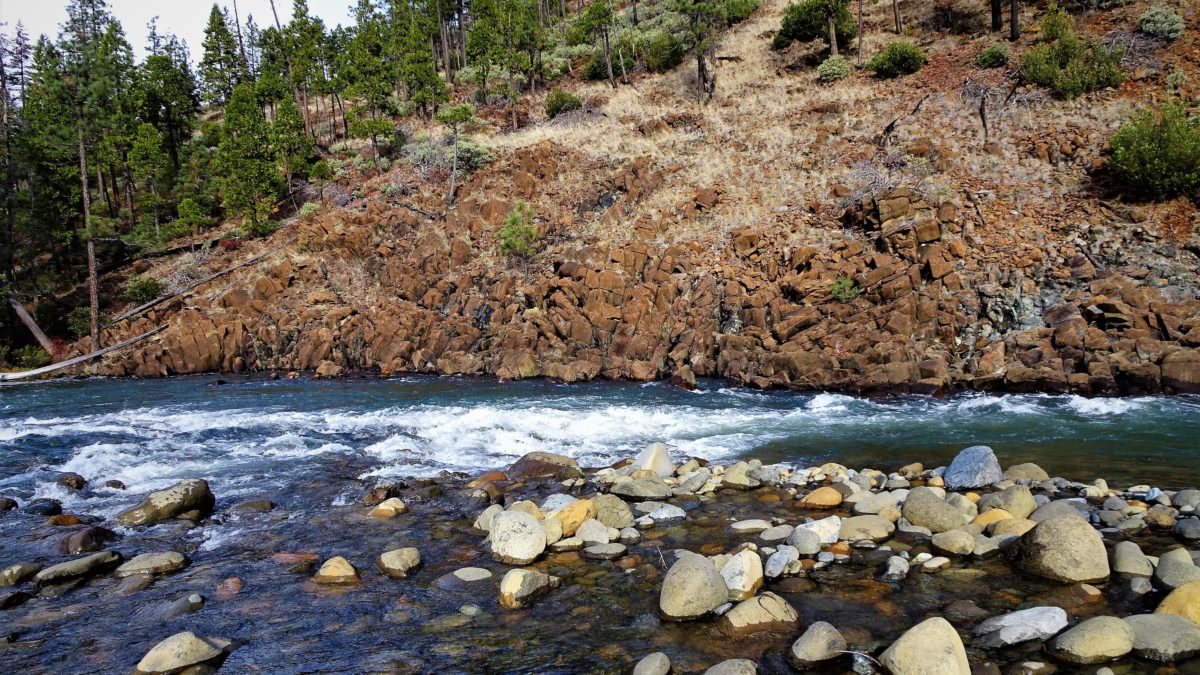
Whether you are talking about water quality or recreation, botany or cultural significance, hydrology or geology, animal life or overall scenery, Rough and Ready has it all.
Historically Valued, Currently Threatened
Local people have known Rough and Ready to be special for generations. Native Americans traveled through the watershed divide and the local garden club established the Rough and Ready State Park in 1937 due to its botanical significance. The Illinois main stem is protected within the Kalmiopsis Wilderness in the original 1964 Wilderness Act.
“[Rough and Ready Creek has] …exceptionally high scientific social and ecological values…”
U.S. Forest Service
But the Illinois sub-basin is unusual. The headwaters actually wrap around the southern, eastern, and northern edges of the Chetco before finally dipping west to the Rogue River. Lamentably, the 1964 Wilderness Act overlooked this detail when they drew the boundaries so the Illinois headwater streams remain vulnerable.
In response, people have worked hard to protect it in other ways. Rough and Ready Creek is now part of the 2001 Clinton Roadless Rule and called The South Kalmiopsis Roadless Area. The Nature Conservancy bought land, public agencies have allocated Botanical Areas and reserves, and people successfully advocated for timber production withdrawals.
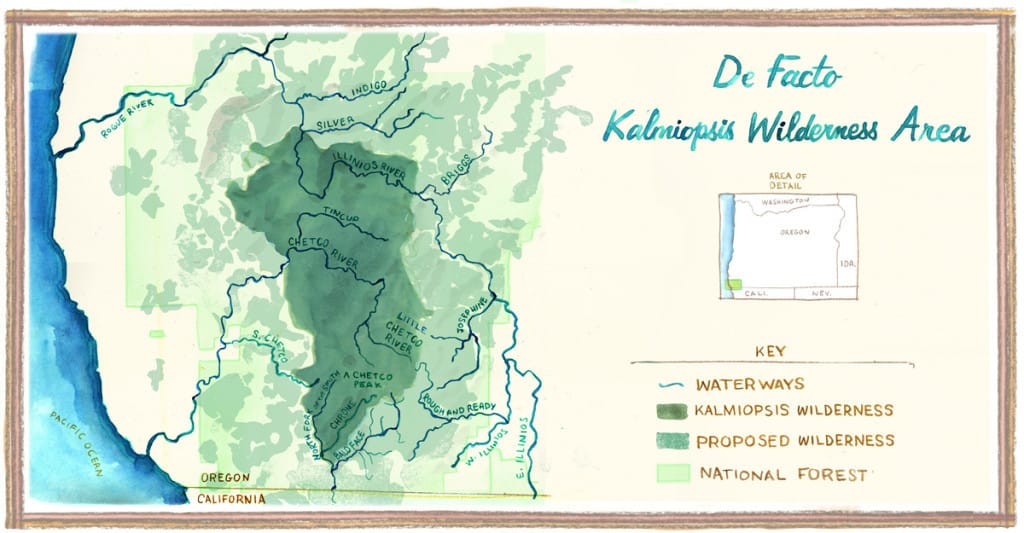
Yet all these supplementary protections are still superseded by the antiquated Mining Act of 1872.
Currently, RNR Resources has two claims in Rough and Ready Creek for nickel strip mines. They hope to remove the topsoil and construct haul roads over creeks to a newly constructed smelter. After almost certainly tracking in the fungal Port Orford Disease, the mines will boom and bust to then leave the public with irreversible and irreparable damage. According to the 2017 EPA report, metal mining was responsible for 50% of all toxic pollution in the United States.
“The botanical diversity and watershed resource potentially affected [by
U.S. Forest Service, 1999, Nicore Mining Plan of Operations Final Environmental Impact Statement Record of Decision, Siskiyou National Forest
mining] are extremely high … and the Rough and Ready Creek watershed is critical for many endangered, threatened, sensitive and rare species of plants and fish.”
Economies based on mines play out, but communities based on recreation stay healthy and viable. A brief economic bonus is no match for the long-term employment and unquantifiable contentment locals and visitors can find in a beautiful and bountiful place. To mining companies, nickel is the only valuable and finite Kalmiopsis resource. To Southern Oregon, its valuables include recreation, water, forest, and wildlife, which are infinite. Southern Oregonians know that compromising all its resources in the name of one is shortsighted.
The vulnerable semicircle of headwaters right on top of O’Brien and Cave Junction need a permanent mining withdrawal. Permanent Mining Withdrawals need Congress. Luckily, Congress and our Oregon delegation are already considering lasting protection. The Obama administration temporarily withdrew part of this area to new mining in 2016. Now we must continue to ask the Oregon state and national representatives to permanently invalidate these claims and institute a permanent mining withdrawal. Any of Rough and Ready’s qualities alone would justify this action, and the mining consequences necessitate it.
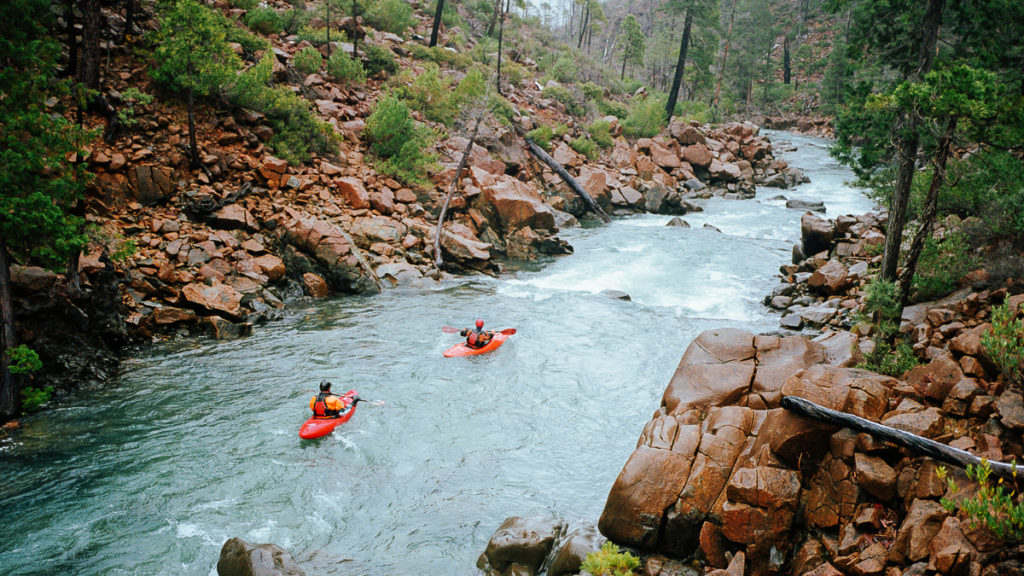
Rough and Ready Lives Up to its Name
Rough and Ready makes the connection between people and our ecosystems clearer. I live and work in this area because I feel better here, because people before me worked hard to preserve it. Any effort to preserve rivers is only as good as its tributaries. We cannot ignore its value to sustainable recreation and its biodiverse headwaters just because it is less known or understudied. Rough and Ready epitomizes this idea, a diamond in the rough undeniably enjoyed exactly as it is by all.

2 thoughts on “Protect Rough and Ready Creek”
Ellie,
So great to see Kalmiopsis Guides Assn.website and video about Siskiyou Wild Rivers. I assume you are in contact with Barbara Ullian of Friends of the Kalmiopsis (Grants Pass).
Hope you are well, and maybe I’ll see you on the river this spring.
Julie Norman (Ashland)
Thank you! Barbara is amazing and has helped me so much, she knows everything you can know about the Kalmiopsis. Hope to see you on the river as well.
Ellie
Comments are closed.